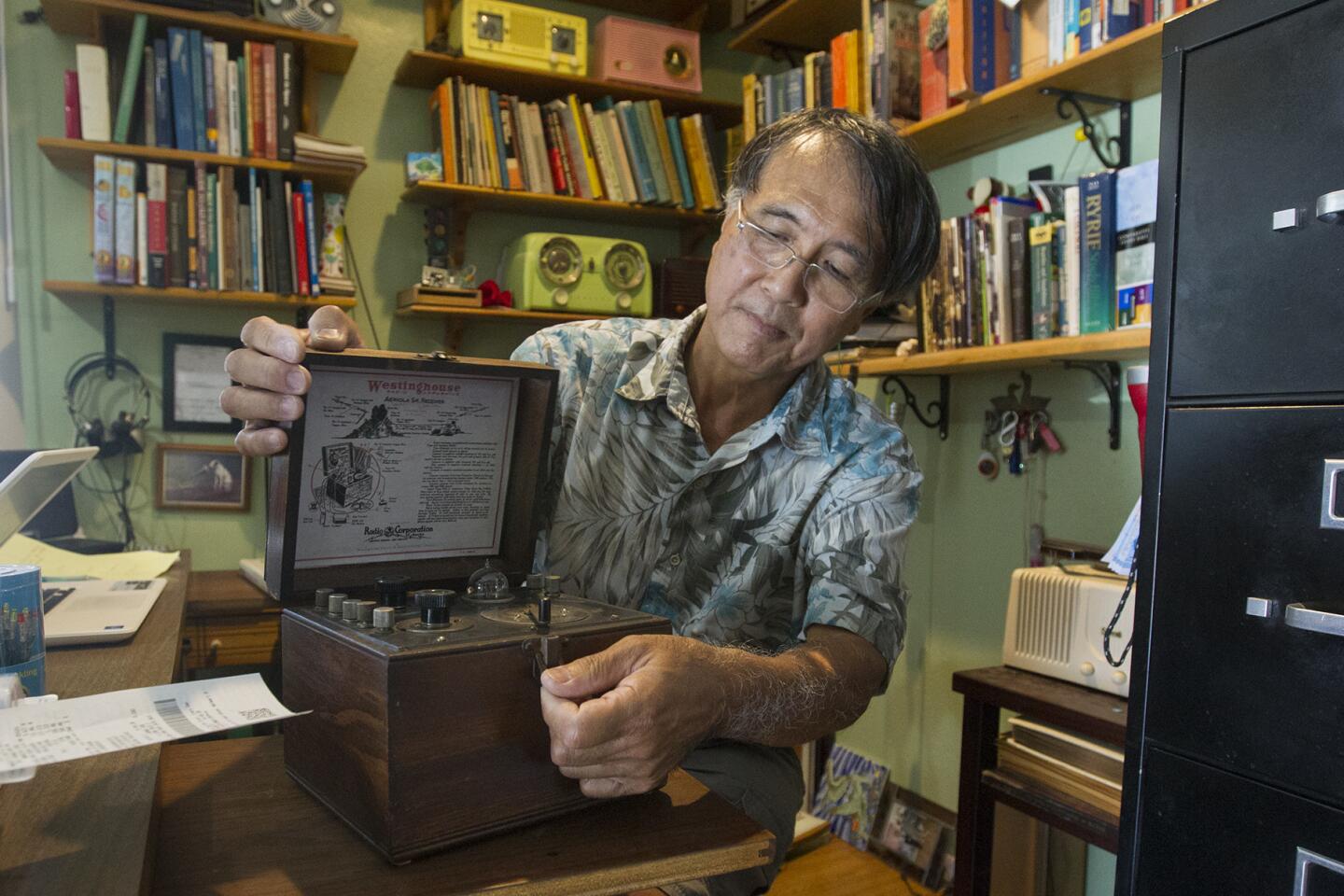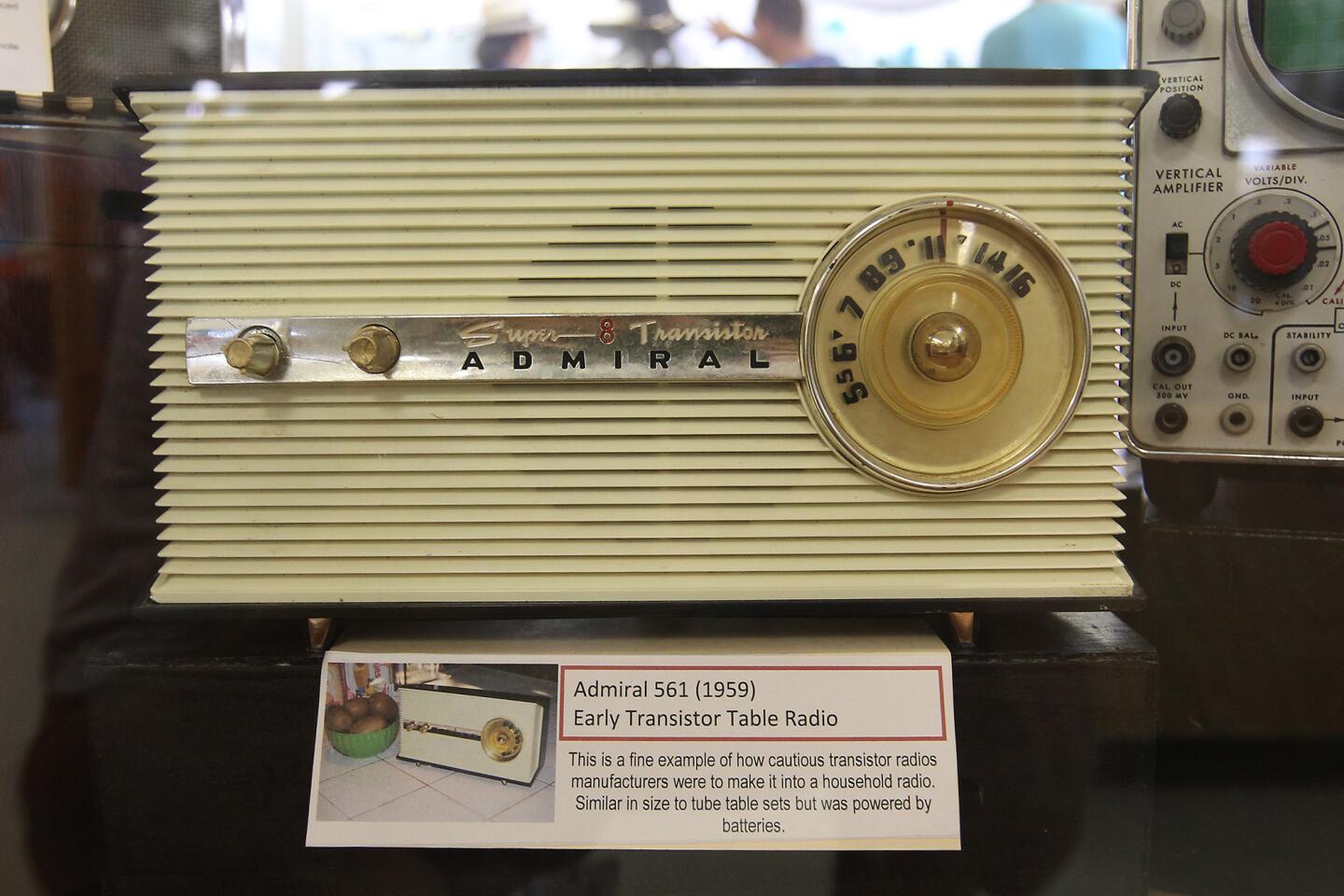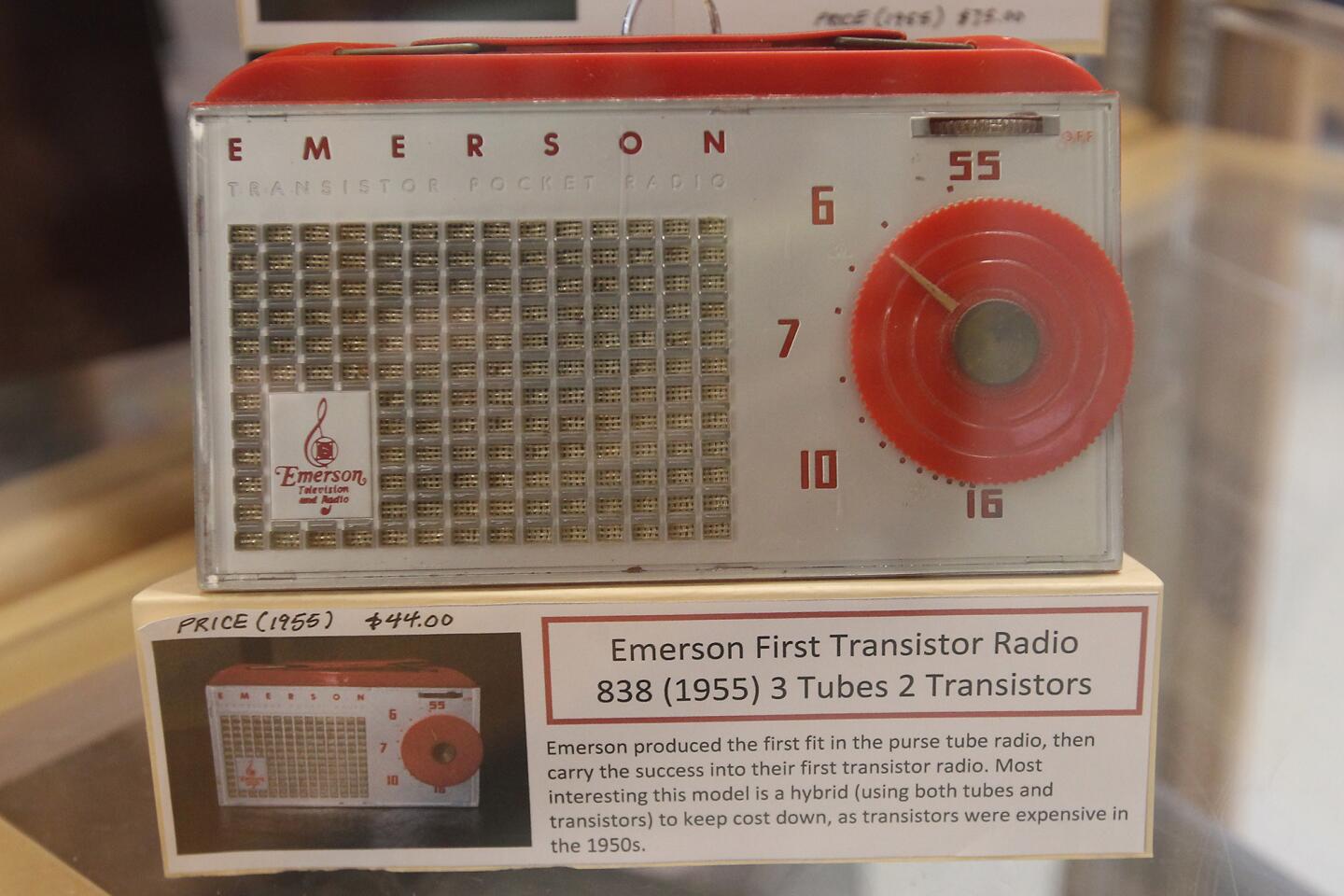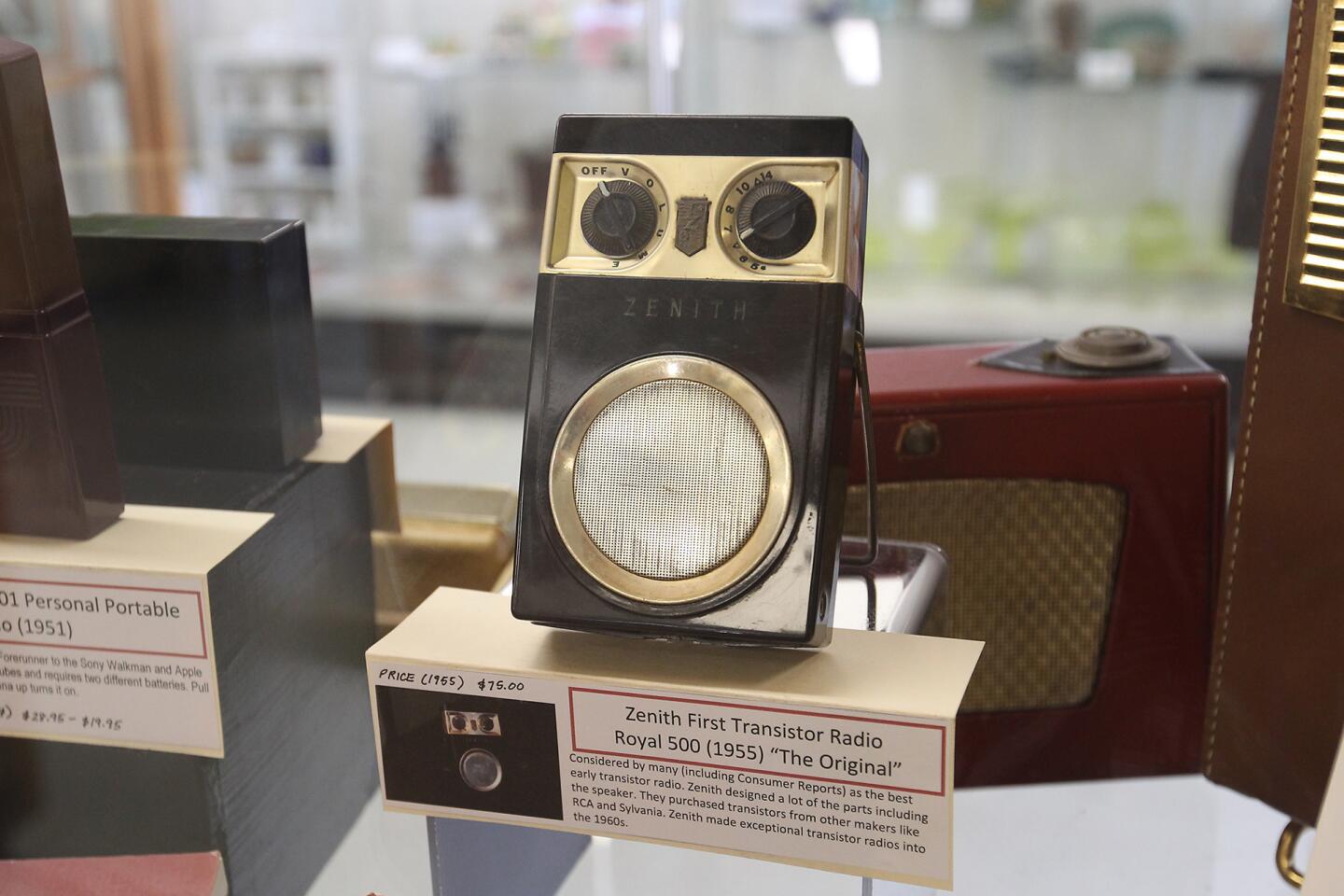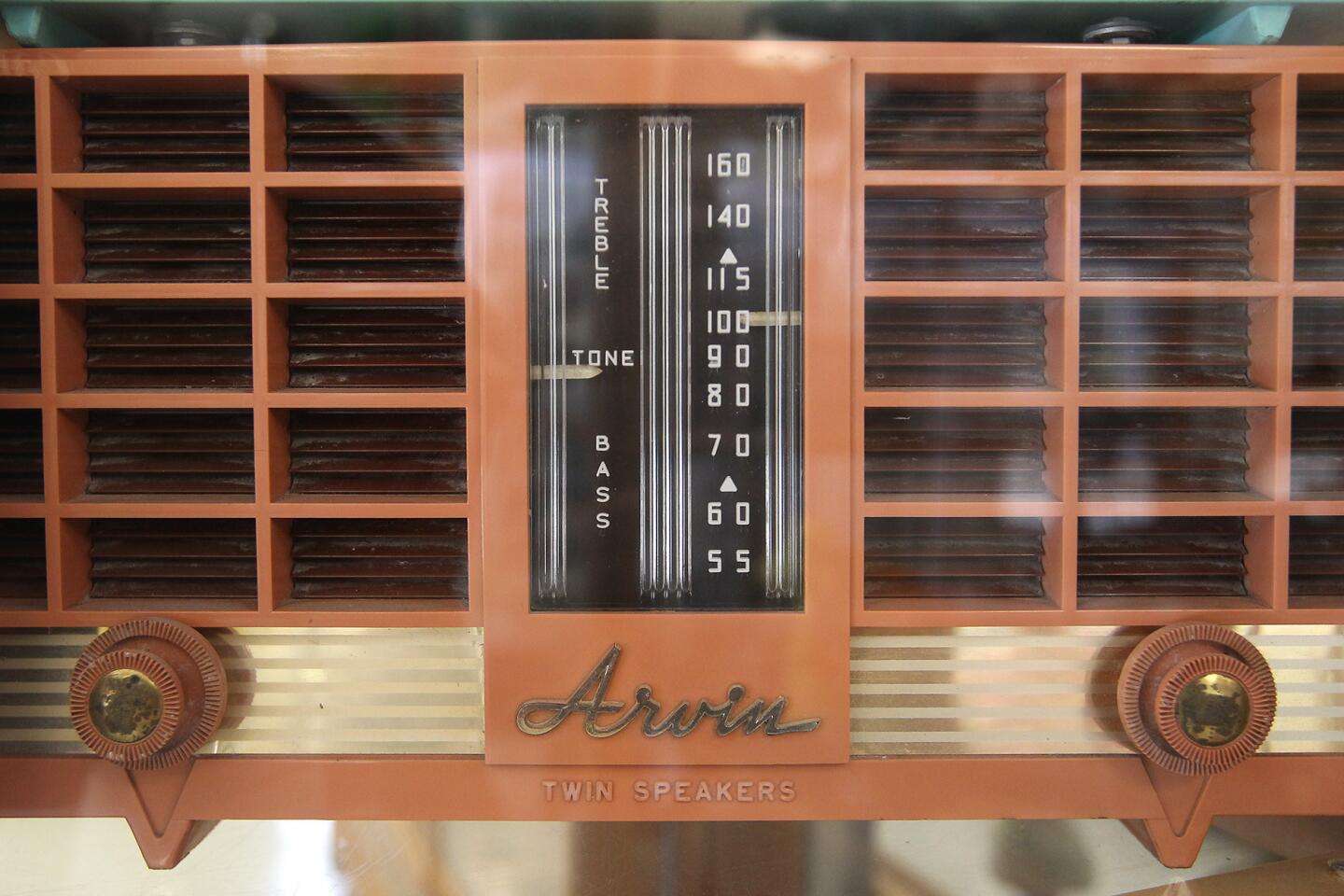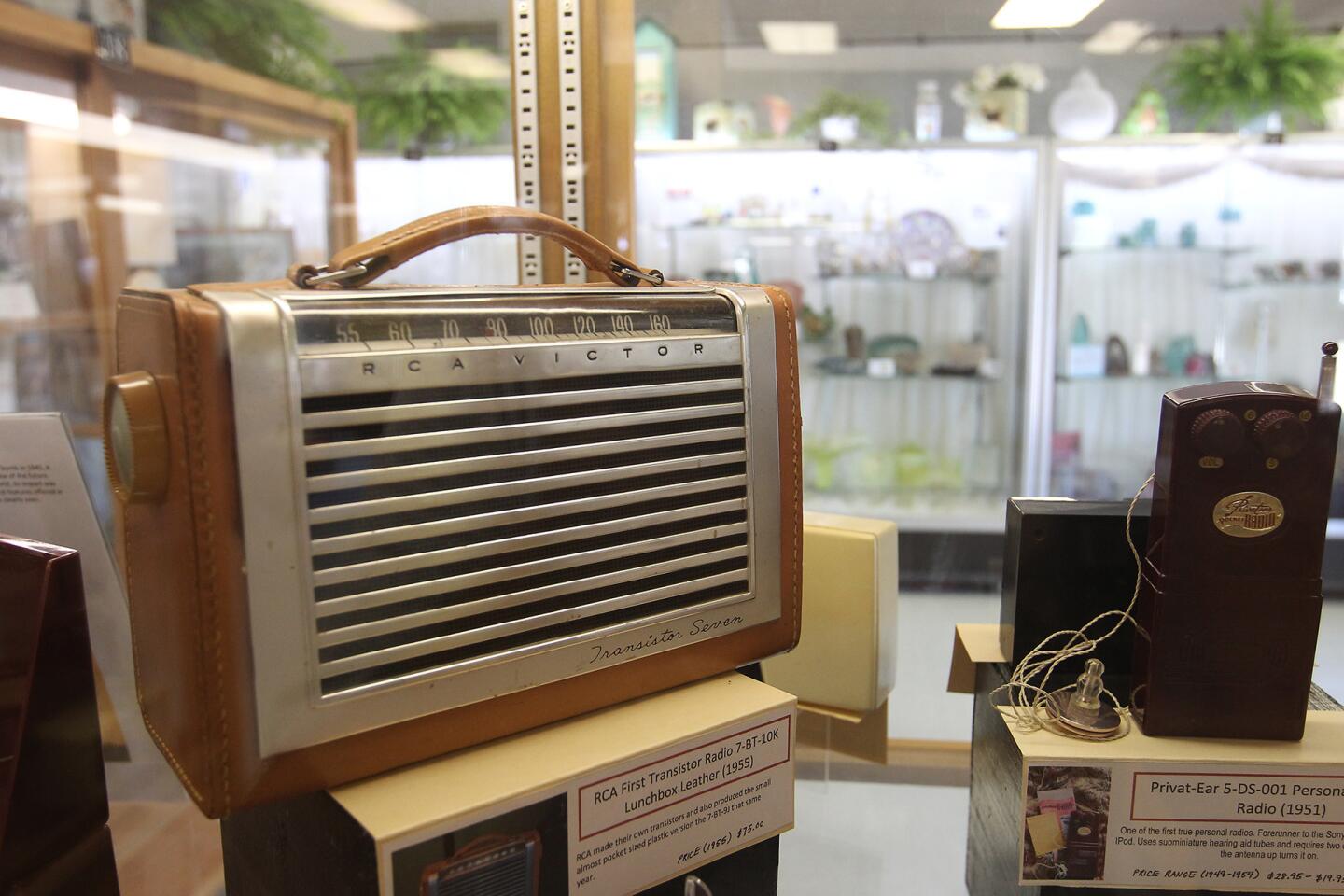Back from the dead, old radios are saved from landfills by La Palma collector
- Share via
When La Palma resident John Eng looks at a piece of what some call “dead technology,” he doesn’t think of something that no longer works.
Instead, he envisions the devices’ heyday.
A curvy Zenith radio with a large clear dial from the late ’40s helps him picture the atomic age when people were enamored of science fiction, such as “The Day the Earth Stood Still” and “The Flying Saucer” movies.
An RCA 630TS television with a 10-inch screen takes him back to 1946 when the luxury item cost about $459, equivalent to more than $1,000 today, he estimated.
These “pieces of history” as Eng calls them, are part of a collection he’s spent around 40 years compiling.
The retired teacher and engineer has more than 200 radios and dozens of televisions delicately stacked in the shelves and rafters of his garage. A few small radios also occupy his office and bedroom.
“He has a lot of items that no one else has,” said Ron Mac Iver, a longtime La Palma resident who keeps record of the city’s history and interesting residents. “I have a set of records on the shelf that date back to the ’60s and he’s got radios that date back to that time. It brings back a lot of memories.”
Besides collecting, Eng also has brought nearly all the items — which span from the 1920s all the way through the 1970s — back to life.
His garage serves as a workshop to revive the vintage radios. His office contains books with model drawings, which he sees as road maps to fixing the classic items.
“Anyone who collects looks at the history,” Eng said. “You just fall in love with it.”
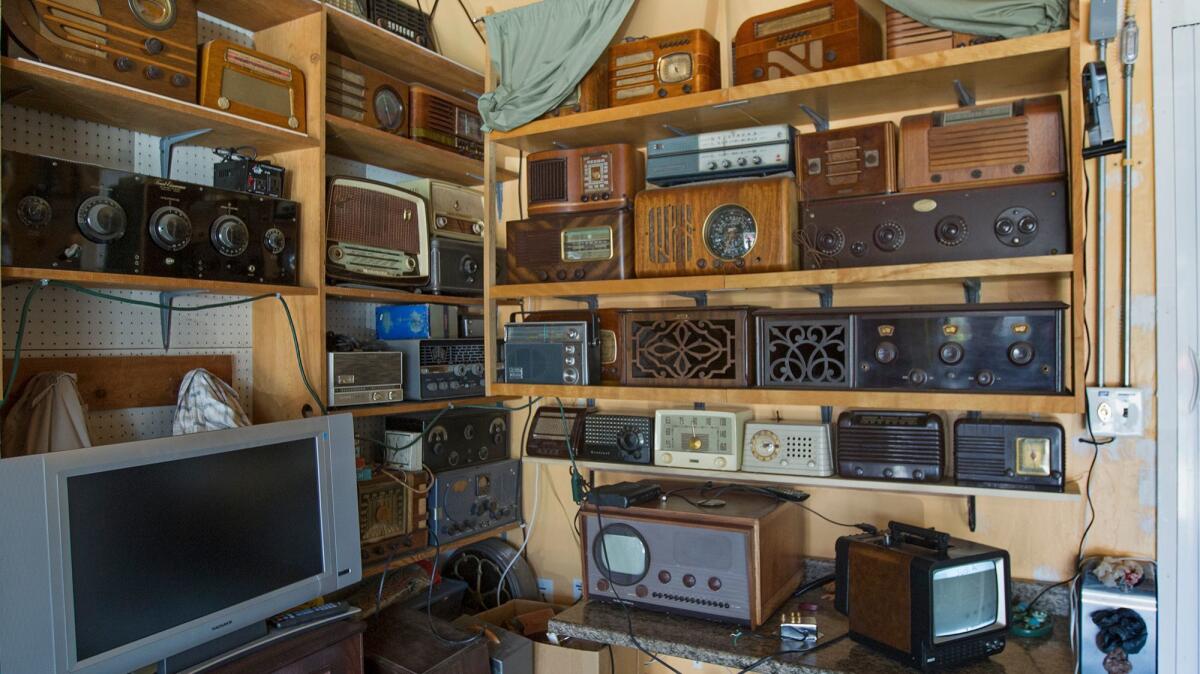
The first item he took home was a Packard Bell radio he discovered as a high school student in the early ’70s.
“I was in a vocational program where a lot of our teachers would rip things apart just to try and fix them,” Eng said. “This one [radio] was cool because it had stations stamped into the dial.”
The Packard Bell radio lived a life long before Eng found it. He decided to take it home.
“My teacher said it’d be taken and put into a junk heap,” Eng said.
Refusing to cut the Packard Bell’s life short marked the beginning of Eng’s decades of saving dozens of other gadgets from entering landfills.
It was a quest that involved numerous trips to garage sales and swap meets to find the old-school items.
“This is where they go before they end up in a landfill somewhere,” Eng said. “When you pick these things up in their beat-up shape, you just want to take it. When you restore it, you realize that something that’s been dead for 50, 60 or 70 years is now back to life.”
As an exhibitor at the OC Fair in Costa Mesa since 2012, Eng has showcased some of his quirky belongings at the summer event, including vacuum tubes in 2012 and early mass-produced transistors in 2013, both of which won the fair’s “Most Unusual Award” for collections.
On rare occasions, people have reached out to Eng about restoring their old radios.
Among them was Stephanie Sakioka, who came to Eng in June 2014 about a radio that her husband’s uncle, a Japanese man, had confiscated from him in 1938 by the FBI.
At the time, Japan and China were at war just before World War II would begin.
thatThe radio was returned to the uncle with the shortwave removed so it could not play international broadcasts.
Before Eng began work on the device, Sakioka asked that he keep the radio stations as they were during World War II to remind future generations of her family of that chapter in American history, Eng recalled.
Eng’s radios, which are all in working condition, each have features that reflect the periods in which they were produced.
Some radios that dated after the war were manufactured with more colors and playful fonts on the dials, since they were being used for entertainment in addition to news.
Fashions that were dominant between 1929 and 1936 were the dark wood, boxy “tombstone style” and the dome-shaped “cathedral style” radios, which Eng said was indicative of the feeling among people during the Great Depression.
The RCA 630TS television — the first mass-produced TV, according to Eng – is the subject of his most current restoration project. The 10-inch screen TV is housed in a large wooden box and has four dials to adjust the sound and picture.
The televisions in his collection are mostly functional, Eng said.
Sometime in the future, he plans to donate pieces in his collection to antique associations, including the California Historical Radio Society in northern California.
“There’s a lot of young people who never knew about that stuff,” Eng said. “I think it’s good to let them show you how Apple and Intel are great. But I also want to show that before that, there were these guys who were also great tech pushers.”
Twitter: @AlexandraChan10
All the latest on Orange County from Orange County.
Get our free TimesOC newsletter.
You may occasionally receive promotional content from the Daily Pilot.

